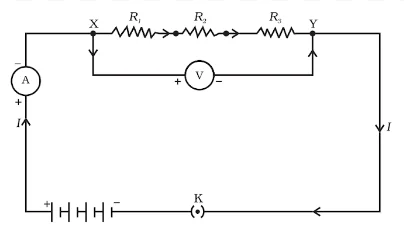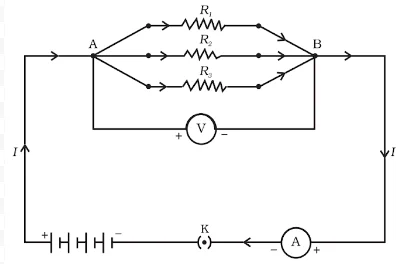![]() 15 Dec 2023
15 Dec 2023
V = V1 + V2 + V3
Let I be the current through the circuit. The current through each resistor is also I.
By applying the Ohm’s law to the entire circuit, we have
V = I R
On applying Ohm’s law to the three resistors separately, we further have
V1 = I R1
V2 = I R2 and
V3 = I R3
Since, V = V1 + V2 + V3
So, I R = I R1 + I R2 + I R3
Or Rs = R1 + R2 + R3

I = I1 + I2 + I3
I = V/Rp
On applying Ohm’s law to each resistor, we have
I1 = V/R1
I2 = V/R2 and
I3 = V/R3
Since I = I1 + I2 + I3
So, V/RP = V/R1 + V/R2 + V/R3
Or, 1/RP = 1/R1 + 1/R2 + 1/R3

P = VI
Or P = I2R = V2/R
1 W = 1 volt × 1 ampere = 1 V A
1 kW h = 1000 watt × 3600 second
= 3.6 × 106 watt second
= 3.6 × 106 joule (J)
Conclusion
Studying Ohm’s Law and electric circuits with a system of resistors offers insights into efficient current distribution. Whether in series or parallel, this systematic arrangement optimizes device performance. Understanding power consumption and energy efficiency becomes key for effective design and utilization.
<div class="new-fform">
</div>